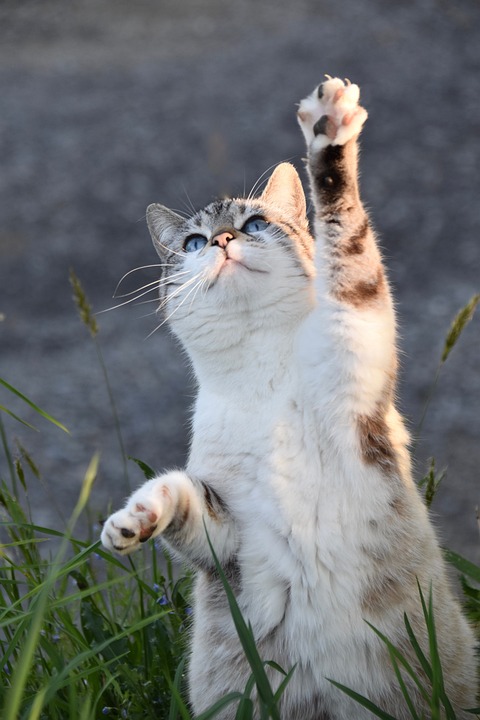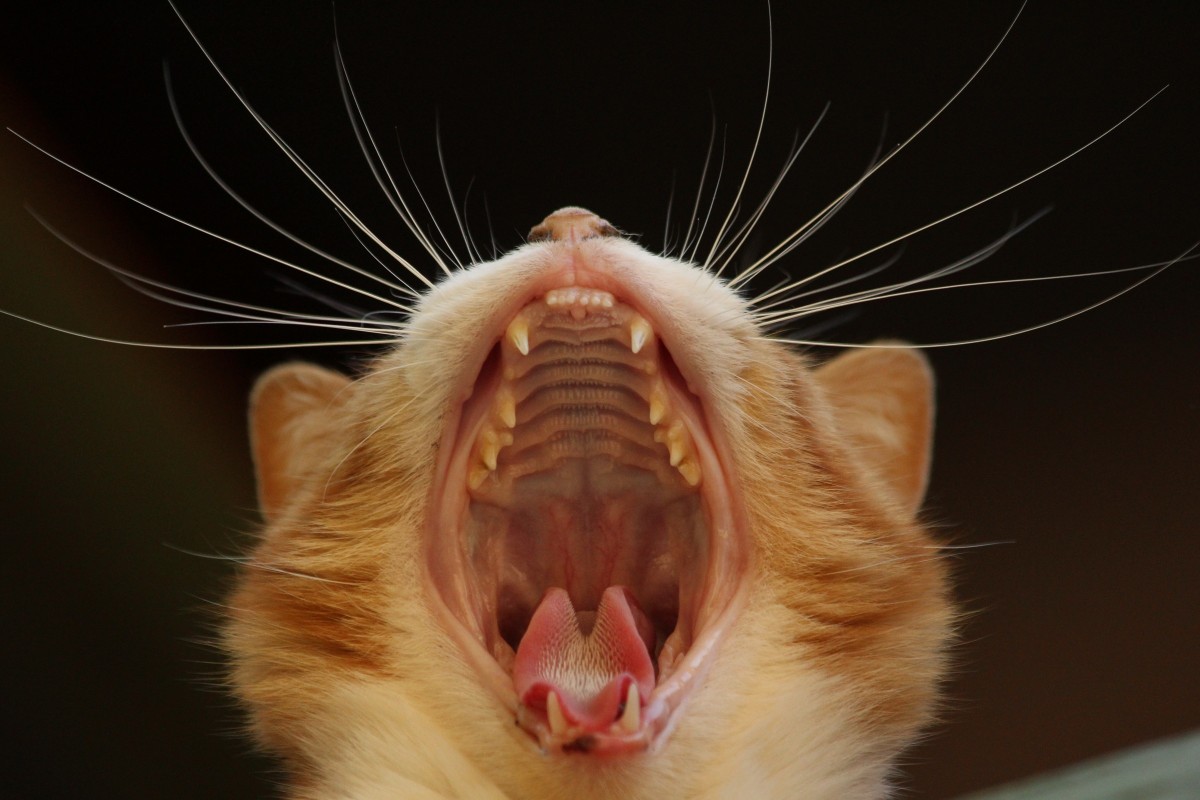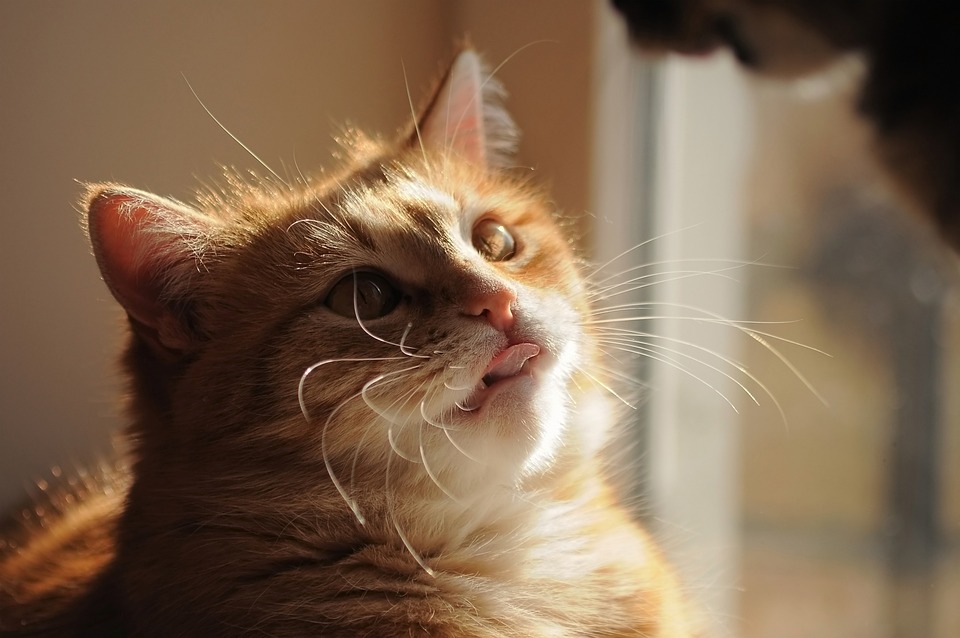
How to Decipher Your Cat’s Language
Contents
- Body language in cats
- Olfactory signs
- Feline vocal language
Animals use a variety of ways to communicate with each other, and cats are no exception. They use body language, olfactory signals, and vocalizations. Let’s look at the cat language to more easily decipher what our little domestic felines mean.
Body language in cats
Cats use facial expressions, body postures, and tail movements to indicate their emotional state.
The head
If the cat’s ears are positioned forward and straight, the cat is relaxed or attentive, it is fine, but if the ears turn back, the cat is angry or frightened, so beware of its reactions.
When the cat looks at you and blinks, it is a friendly message. While playing, he will have dilated pupils, but beware, he may also have black eyes in anger, so it is essential to see his body attitude to understand his expression.

The relaxed expression on his face also comes into play in the cat’s language. Mustaches are more or less disheveled, mouth closed or open, and showing the fangs, be attentive to everything.
The body

A quiet cat has a neutral attitude, its muscles are relaxed, and its body is supple. It sits, lies, or walks calmly.
He is afraid if his body is tense, nervous, and gathered on itself. He may be facing another cat that dominates him.
On the contrary, if he makes himself as big as possible, his body arched, his hair inflated, and he walks like a crab, it is the typical intimidation posture!
The tail
Tail wrapped around the cat, motionless or moving gently, everything is fine.
If the tail is tapping, the cat means, at best, that something appeals to him. At worst that he begins to be seriously annoyed, beware. For example, your cat tells you to stop caressing him if he thrashes his tail.
When the cat puts his tail between his legs, against his belly, he is in a submissive position, on the defensive.
Olfactory signs
More or less easy to detect by our human smells, olfactory signals give additional information, often related to territorial marking.
Urinary marking
Used by cats to mark their territory, it can go unnoticed by us in the wild, but if it is done near or even inside our homes, it can quickly become hell.
Too many cats in the house or misunderstandings between animals can cause these recurrent urine markings.
Pheromones
Cats excrete pheromones through their sweat glands. Located on the head, cheeks, or between the paw pads, they use them to deliver messages to other cats.
Friendly or soothing pheromones when cats rub against each other (or against us), information about their age, sex, and territorial tags when cats walk or claw in strategic places.
Feline vocal language
Finally, they have a wide range of vocalizations, which completes the feline language.
The humming sound
It is one of the cats’ first vocalizations when they are kittens with their mother. Purring has several functions, as it is used to express well-being as well as to soothe itself or a fellow cat. A cat in pain purrs to reduce the pain.
The call cries
Used by the mother cat to call her kittens and by females in heat, the call cries are powerful and easily recognizable.
Intimidation vocalizations
Cats will scream, huff, puff, or spit to intimidate and scare away an intruder cat, dog, or any other animal that is not welcome in its territory.
The meows
In nature, cats use little of the meows that we know. This vocalization is mainly intended for communication between cats and humans. It is domestication that has generated the development of this specificity.
Now you know all about the language of the cat. Hope you like this article, don’t forget to leave some words in the comments below.





